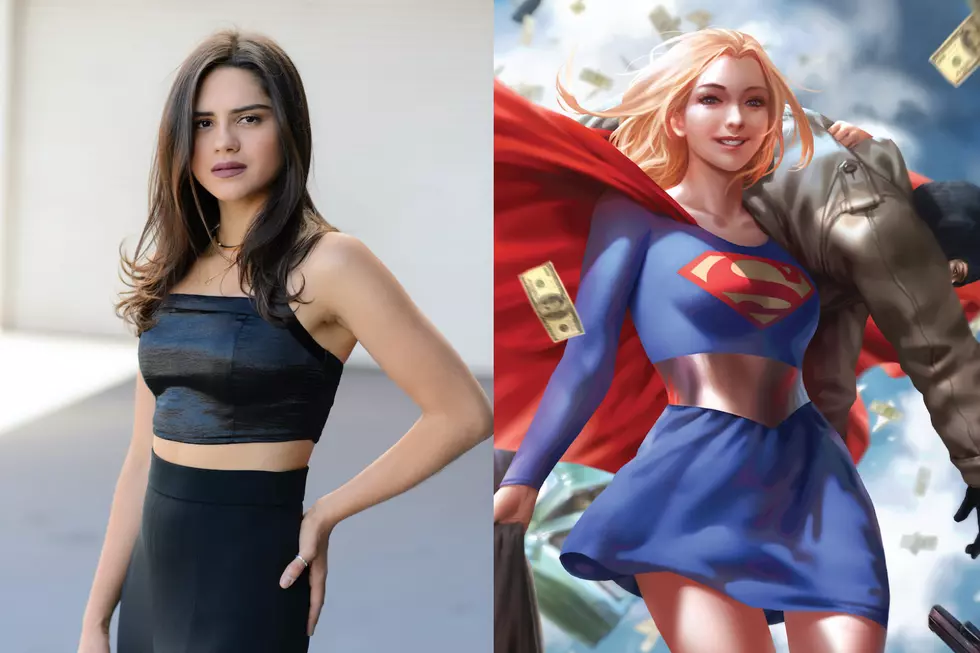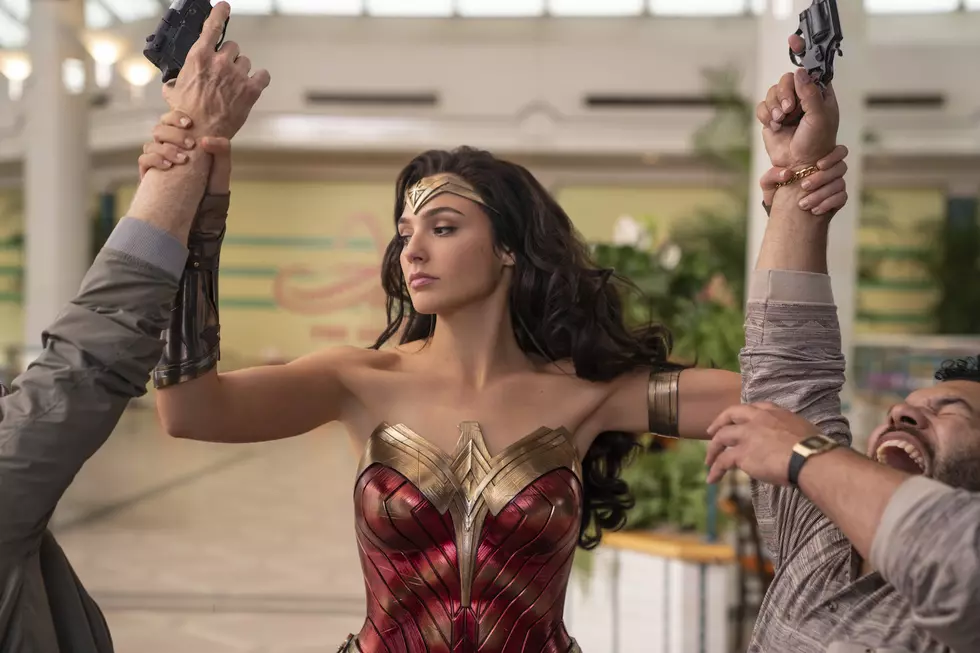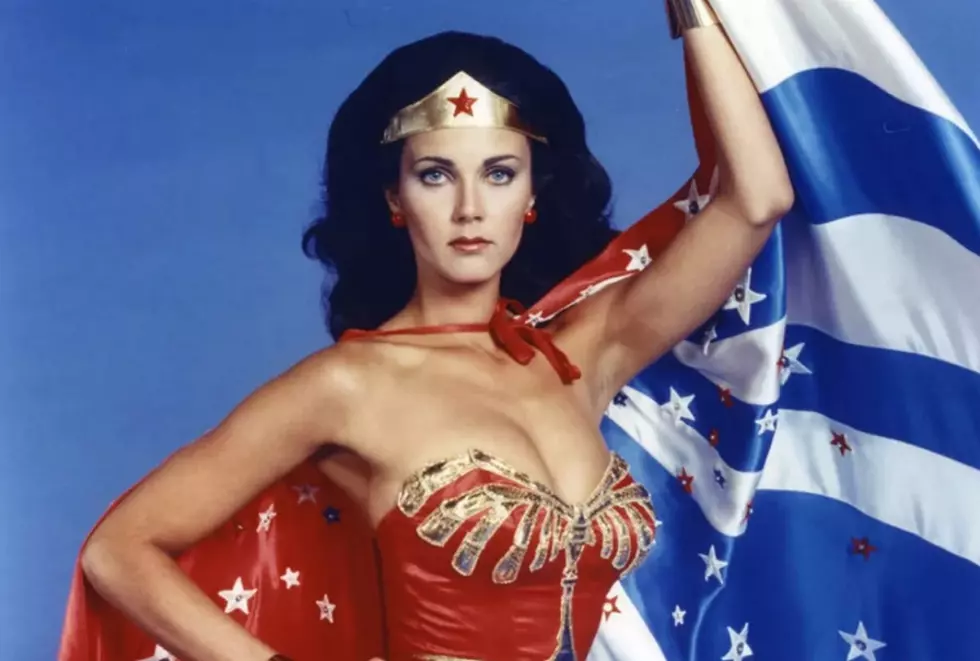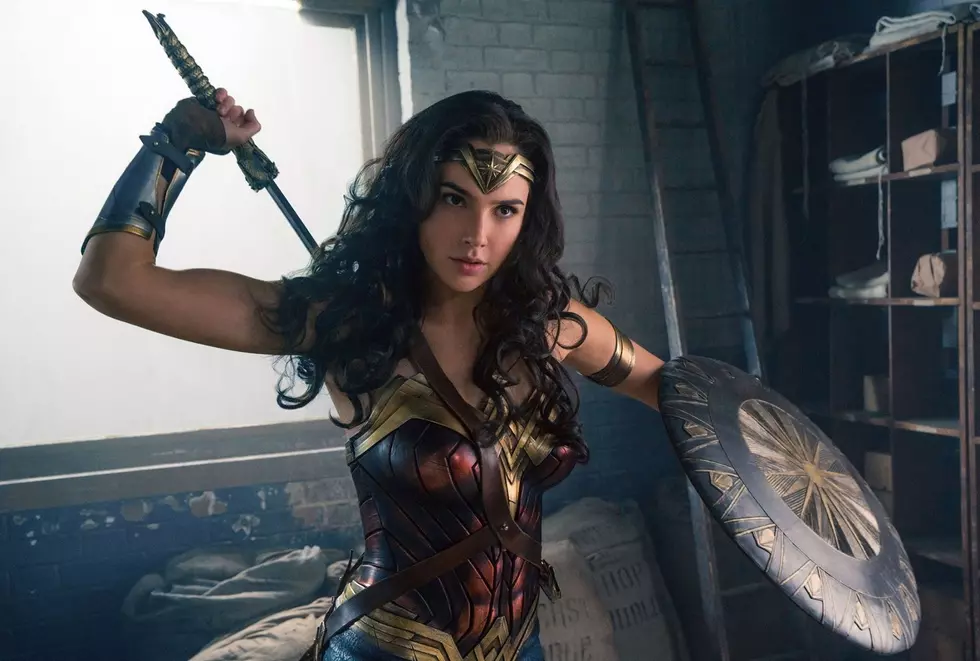
Sidekicked: How Superhero Publishers Are Failing Kids
Comic readers are often annoyed by the outdated assertion, “but comic books are for kids!” As those of us within this culture know, comics today are usually made for and marketed to adults, especially single issues and superhero comics. However, comics, as a medium, should and can serve a vast variety of demographics. Publishers simply need to be ready to create the books that readers will read.
Most comic readers can point to some great comics for kids, including Smile, Bone, My Little Pony: Friendship is Magic, and Adventure Time -- but for many parents and young readers, there is a huge void in the comics that exist today. There are very few high-quality, positive, superhero comics for kids.
The majority of superhero comics on the stands today are not exactly kid-friendly. Whether it’s the amount of violence or the complexity of the storytelling, the superhero comics that make up the majority of the direct market’s business aren't the kind of stories that are okay to hand to a child younger than his or her teens.
But even beyond the need for stories that are accessible for kids and less dark and violent than adult comics, there’s a definite lack of superhero stories for any age that focus on positivity and the joy of being a hero. To digress into my own very specific kind of nerdity for a moment, as a kid I was obsessed with books like Little House on the Prairie and Anne of Green Gables. The characters in these books faced real challenges, like the loss of parents and homes, but the general tone was positive and encouraging.
It was my love for strong, upbeat, outspoken heroines that led me to comics, but today I feel like there’s a dearth of comics featuring that kind of character (though not a complete lack, thankfully) and if I had to travel back in time with a comic to hand my younger self, I would have nothing. At least, that is, nothing with capes in it.
This lack of positive superhero comics for kids is felt across the industry by people who want to produce and support a world where awesome superhero comics for kids are readily available. Comic book writer Landry Walker, perhaps best known for his Supergirl: Cosmic Adventures in the 8th Grade miniseries with artist Eric Jones at DC Comics, explains the importance of more comics for kids;
“I like the idea of a healthy industry both today and tomorrow. To address that we need a wider scope with our comics material, both in terms of age and gender. What's lacking currently for the younger readers? Accessibility. The average comic on the shelf may be fine, or may be too adult oriented. Bare minimum, corporate controlled properties like Batman, Superman, Spider-Man and the like need to have a healthy and consistent (not media tie-in) offering that is appropriate for all-ages. Not dumbed down for kids, mind you. Kids want smart comics as much as adults do.”
Marc Hammond, general manager and co-owner of Aw Yeah Comics in Skokie, IL, agrees, and says the industry needs “a wider variety of comics featuring the characters that we all know and love, and grew up with, in a format or selection accessible to kids. Books starring Batman, Spider-Man, and more that are more than just cartoon tie-ins that go away once the cartoons do. Books in a shared universe bolstered by some continuity but not weighed down by it. Books that feel like they matter.”
Editor Jann Jones, who was responsible for putting together some of DC Comics’ most critically acclaimed superhero comics for kids, including the aforementioned Supergirl: Cosmic Adventures in 8th Grade as well as Tiny Titans, cites this lack of non-tie-in comics as part of her inspiration for trying to make more creative comics for kids.
“My inspiration was my nephew," says Jones. "I remember looking at the kids comics that DC was publishing and realizing that there weren't any I could give to him. Considering that they were marketed towards children, there was a level of violence and subject material I just didn't consider appropriate for his age. They were all connected to animated shows, and I thought there should be books that would be evergreen and truly all-ages.”
Since most superhero cartoons last only a few seasons, the comics that tie into them only last a year or two before being replaced by a comic that ties into whatever the next superhero cartoon is for that franchise. Like many comics fans my age, part of what got me into comics was the 90s X-Men cartoon and its associated comics. There’s definitely a value in offering media tie-in comics for kids and adults; they make an excellent gateway into the world of comics reading. They simply shouldn't make up the entirety of any publisher’s offerings for children.
One of the other voids often felt in superhero comics is the lack of comics for young, new readers. Several of the people I spoke to mentioned a desire to have more books for readers of this age, around 5-7, as the interest in the characters is definitely present. Hammond says, “I know they can be a tough sell, but it is worth it. So many parents turn to comics more and more to help their children develop. It would be nice to see more choices at the rudimentary level.”
It’s true; it’s not just “bam! pow!” (insert your own comics cliché of choice here); comics can be a wonderful developmental tool for children. Regardless of the genre, comics of any kind that are created for a young audience offer something that words alone do not. For new readers, pictures can help a great deal with making a story understandable.
Psychologist and ComicsAlliance contributor Dr. Andrea Letamendi, currently a clinical educator and consultant at one of the largest non-profit children's mental health agencies in Los Angeles County, explains, “The fields of education and library science have pointed to the benefits of comic books because of their use of sequential art. In fact, children learn to read for the first time with picture books. They make an emotional and cognitive connection between the images and the words in order to comprehend the story.
"Visual literacy is also an important component of child development; Illustrations in comic books are just as integral to the story as the written narrative because of their ability to draw in the reader and develop a deeper meaning of the story. Comics can be just as complex as any kind of literature: The sequential images actually promote critical thinking, encourage thoughtful prediction, and stimulate curiosity.”
The benefits of being exposed to comics at a young age don't stop there. Superhero comics in particular have much to offer children in regards to learning about the world around them.
“Comic books in general are good for kids because they stimulate the imagination," says Walker. "They encourage reading and educate children in the tools of visual storytelling. Beyond that, and more specific to superhero comics, is morality. Right and wrong. Good and evil. A story about a hero struggling against theoretically insurmountable odds and risking their own safety for those helpless to defend themselves? Stories of redemption and loyalty? Children absorb these things. They can help children form a sense of justice and honor. They can bolster a child's self esteem. Furthermore they educate in terms of language -- both grammatically and visually. Really, there is no end to the positive benefits of good comic books for children.”
Letamendi agrees; “Superheroes are not simply reflections of our human capacity to be brave, confident, influential, helpful, and pro-social. While those are important characteristics to learn about, reading about superheroes also allows youths to understand some very real-world lessons about psychological resiliency. Sometimes bad things happen to good people. In my profession, this is one of the more difficult realities to deal with, especially after a child experiences a trauma, hardship or life stressor that creates a lot of confusion and doubts about the safety of the world--and whether we want to be in it.
"Despite the powers and protection of super-strength, x-ray vision, telepathy, time-travel, heroes are still susceptible to the human condition of loss and failure. Comic narratives help youths identify with the co-occurring emotional reactions to trauma such as grief, depression, and hopelessness. Seeing the hero put the cape back on is one of the most powerful experiences a youth can have as a reader. More times than not, part of the recovery comes from the hero's ‘natural supports’ -- peers in their social circles and ‘family’ members (sidekicks, mentors, etc). Comic books, therefore, can provide chances to learn and even practice emotion regulation, serve as a forum for identity development, and help a youth understand how to build social ties.”
Clearly the benefits Letamendi mentions don’t end when a child reaches his or her teen years. Similarly, high school teacher and librarian Katie Bell explains the interactions her students have with comics; “I see comics as a ‘gateway’ medium for reluctant readers. Many of my kids come to school in Grade 10 and they are amazed that I have comics and manga in my library and they start reading everything I have. I have found that they usually start out with comic books and then they will move on to novels. I also find that it opens the door for peer discussions about a common interest and they form friendships based on comics and reading in general. I hear, ‘Hey, have you read... ? It is pretty good. It’s about... ’ a lot. Comics seem to be a safe hobby or interest for kids.”
Other than a lack of content for the girls in her school, Bell feels that her teen audience is well-supplied with comics reading material. Creating and distributing comics for any age is not without its challenges, however.
I spoke to an assistant librarian named Jan who highlighted to the difficulties librarians face in ordering and organizing comics. “The people in charge of ordering the comics don't often know much about them, so the collection was not the greatest -- series would have gaps, et cetera. Unfortunately, often things get mis-classified or YA comics end up in the same place as kids' stuff, which leads to upset parents when their eight-year-old brings home Watchmen.
"The positive thing in recent years is that libraries have learned to label and shelve the graphic novels in a section of their own, and that has helped kids to discover them on their own and browse for new comics they may like. Bone has been the most popular title for the 8-12 set for a while now, and it works well in the library, as it is a self-contained series. I have never seen a library with individual issues of comics, since they wouldn't make sense for multiple check-outs. The line between Picture Book and Comic Book can be really blurry when it comes to kids, so it can be tricky cataloging certain books.”
In an ideal world, I think comics should be shelved along with “regular” books. In a library, children’s books and adult’s books are separated and shelved according to author, while most bookstores also organize them by genre. Doing this in school and public libraries would solve the problem of kids bringing home inappropriate material and erase the line between picture books and comic books.
Creating superhero comics for a young audience also presents unique difficulties. Jones lists some of the challenges she faced at DC: “The reception was a mixed bag. The retailers who understood what we were trying to do had a lot of success in selling the titles. But a lot of retailers were really resistant and wouldn't order/reorder. Getting them to change the way they ordered and viewed the kids material could be very tough.
"Contrary to some opinions, Dan DiDio was incredibly supportive of the books. He fought for new titles, publicity support, and helped me not get discouraged. Some of the higher ups didn't see the point or value in doing the books. In a meeting of senior editors, I was told by an executive that my books were a failure. After that we couldn't get anything else approved. We had some amazing talent pitching us and were told that their talents would be wasted on the material. It's one of the reasons I left DC Comics. Those books were my happy place and the lack of support was crushing.”
For all the struggles, creating comics for kids can also be an enjoyable experience. Walker explains what he enjoys about writing for a younger audience: “The fact that you can write whimsical scenarios without worrying [about] straining an adult’s overly rigid suspension of disbelief is great. That's true even if the reader is an adult -- and I like to tailor the comics I write for kids as much into the realm of ‘all-ages’ as possible.
"Furthermore -- and probably more importantly -- is this: The sensation you feel when you have to grab the copy of the very much not all-ages book you wrote from a curious child at a show is terrible. Why cut out a huge portion of potential readership? Why discourage kids from reading?”
Jones similarly enjoyed editing children’s comics and would love to do it again: “There was ease of storytelling, dialogue, and content issues that you don't have to consider when editing for adults. Part of my goal with those books was for kids to fall in love with the medium at a young age. Hopefully that love would continue on as they grew up. I am so proud of the work that I did on those books. I worked on some high profile projects but that was my highlight of my time. I cheer every time I see new projects from the creators of those books. I hope to maybe someday have a chance to work on that kind of material again.”
It’s not just the creators who enjoy comics for kids and all they entail. Retailer Hammond not only loves selling comics to kids, he also enjoys creating a fun environment for kids. “Don't you want to go to places that are fun and amusing? Kids do, too, to the tenth degree. Especially places where they can see cool things, all the while being talked to, and not down to. Give kids the opportunity to rise to an occasion as opposed to trying to make them slip beneath a bar that has been lowered, and they will rise nearly every time.
"Not to mention it keeps us, and the parents, young at heart. Seeing the absolute joy in a child's face when they get their first comic reminds us of every reason we choose to work in comics in the first place. Kids are fun. They see things in a way that we may have forgotten, because our heads are preoccupied with mortgages, car payments, insurance, repairs, and a hundred other important things. Not to say that adults can't experience wonder. But it is through a filter that children don't have. Having a shop, and a comic line, geared toward people at their most impressionable, their most joyous, is one of the ways that we will see this industry that we all love not only survive, but thrive.”
If the comics industry is to thrive in the future, it needs to appeal to not just a wider variety of ages in its demographics, but also a broader diversity in terms of race and gender. Letamendi has noted the effect diversity has on young comics readers. “When children read literature, they ask themselves, ‘How is this character like me?’ and ‘What do I see in this character that I see in myself?’ This is where gender can be important: Children notice differences at surprisingly young ages.
"Many studies have explored the impact that the media has on youths in terms of racial and gender inequality and under-representation, and conclusions are very eye-opening: kids know when people who are just like them are left out of stories. This may have an impact on how they interpret the message of the story and whether it applies to them.
"So when we select comic books for ourselves and our children, we may need to ask some questions about the narrative. ‘Are men the only ones shown to have the power, wealth, influence and leadership?’ ‘Are female characters depicted as having a positive role in the story?’ ‘Are the male characters the only ones who have been turned into action figures?’”
Walker points to a desire for diversity as his motivation for his Supergirl: Cosmic Adventures in 8th Grade series: “Supergirl needed a proper ‘Year One,’ where she gets to take her own journey and emerge a hero. Not just because she's wearing a Superman costume, but because she is moved emotionally for her own reasons to fight against evil and injustice. We wanted to take that story and reach as many readers as possible.
"But beyond this, we wanted to reach younger girls. To give them a superhero that could be their own, rather than the pin-up Supergirl that is clearly targeted towards male readers. A character who they could relate to because her plight -- new girl in a strange land, dealing with social anxiety and acceptance -- resonates with their reality. A character who could take all the adversity thrown at her and retain her independence and emerge a hero. Boys have lots of that to read -- and that's great. Boys should have that. But girls should have it too.”
Hammond does see a growing diversity in the range of comics currently available. “I feel that comic readers are more open to variety than ever before, and that means diversity. Not just in the ethnicity or economic background of the characters, but of the creators themselves. We live in a world that grows by leaps and bounds daily with our knowledge of the universe around us, but is conversely brought closer together by technology so that we can, if we choose, experience it together.
"Granted, your standard superhero fare is still what sells the most, but we have never had such a wide range of content as we do now. So what I see and hopefully what we encourage is readers, new or longtime, seeking out quality in diversity. Often times the shortcoming in them finding it is the limit on my time to seek them out to stock them regularly. But we get better at that all the time.”
The comic book industry is currently at a point where the limitless possibilities of the medium are being embraced. Format, content, genre, demographics are all being played with in new and interesting ways. Finding comics to recommend to a new reader of any kind is no longer the difficult task it once was… unless you are trying to give superhero comics to a child.
Parents want to be able to give their kids inspiring superhero comics that are based on the heroes they know and love, or even just the ones that their kids are asking about. Currently, the companies that own those superheroes are not providing comics material that offers evergreen, accessible, kid-friendly storytelling.
Thankfully, there are some options in a non-comics format for very young children. Both Marvel and DC have a booming business in illustrated children’s books -- these are almost never comics, unfortunately, but they are a great introduction to the characters. For many children, these are their first experiences with superheroes, and it is an exciting one.
Sometimes these books are published by Marvel and DC’s parent companies, as with Disney’s illustrated Marvel Super Heroes Storybook Collection, while other times they’re produced by licensees. Downtown Bookworks is one such licensee, and they create 'My First…' board books that are an introduction to superheroes for toddlers.
Julie Merberg, president of Downtown Bookworks and the author of their upcoming book DC Super Heroes: My First Book of Girl Power, had this to say about creating superhero books for very young children: “Superheroes are a great subject matter for babies and toddlers because there is good and bad with no gray area — which is very much in line with their worldview. One of the reasons we publish superhero board books is to get dads excited about reading with their babies.
"We believe -- and the American Academy of Pediatrics has confirmed -- that it’s really important for children to be read to, from the minute they’re big enough to sit in your lap and focus on an image. Our superhero board books give parents an opportunity to share one of their own childhood passions with their young children in a way that’s fun and appealing for all of them.”
Wonderfully, Downtown Bookworks has not just stuck to providing superhero books for boys and featuring male superheroes, but instead also offers books like DC Super Heroes: My First Wonder Woman Book and Merberg's upcoming My First Book of Girl Power.
“In 2011, we published My First Wonder Woman Book -- an interactive board book and companion to My First Superman Book and My First Batman Book. It has been really popular with moms and comic book fans who have been asking us to create more titles for girls. None of the other female characters is popular enough to warrant a book all to herself. But realizing how many female fans were out there, we thought it would be great to introduce them to the cool, lesser-known characters — and to the traits that make them so powerful. With the female superheroes, there’s a lot more going on than super strength.
'We also thought it was important for girls to have these strong role models the way boys can look to Superman and Batman. As a mother of four boys, I don’t want my kids -- or any readers -- thinking of women as the characters who need rescuing, but want them to recognize that women and girls are brilliant, powerful forces of good. When my two younger sons play with my niece, I’ll hear them asking her what super powers she wants to have, and it warms my heart.”
Superhero publishers could learn a lot from Downtown Bookworks and try to make positive, inclusive superhero comics for kids once they graduate from picture books. It’s unfortunate that once children are old enough to tackle comics, that there are no comics to welcome them into the broader superhero world.
It’s never too late for the comics industry to start producing quality superhero comics for kids, thankfully. And it’s important to remember that without encouraging a new generation of readers, in 20, 30, 40 years, there will be no superhero fans.
Walker believes that supporting and creating comics for children is an important part of keeping the industry growing. “In our efforts to legitimize and mature the medium, let's not leave behind the audience that helped allow the comics industry to flourish in the first place. Doing so is poor business, and also robs children of directly experiencing a beautiful art form.”
Hammond points to the inspirational quality of comics as not just important for readers, but also for future creators: “New readers are not the only goal, but new creators as well. The next Art & Franco, the next Kelly-Sue DeConnick, the next Jim Lee, are all kids now, waiting for that one moment of encouragement. Isn't it about time we gave it to them?”
More From ComicsAlliance









